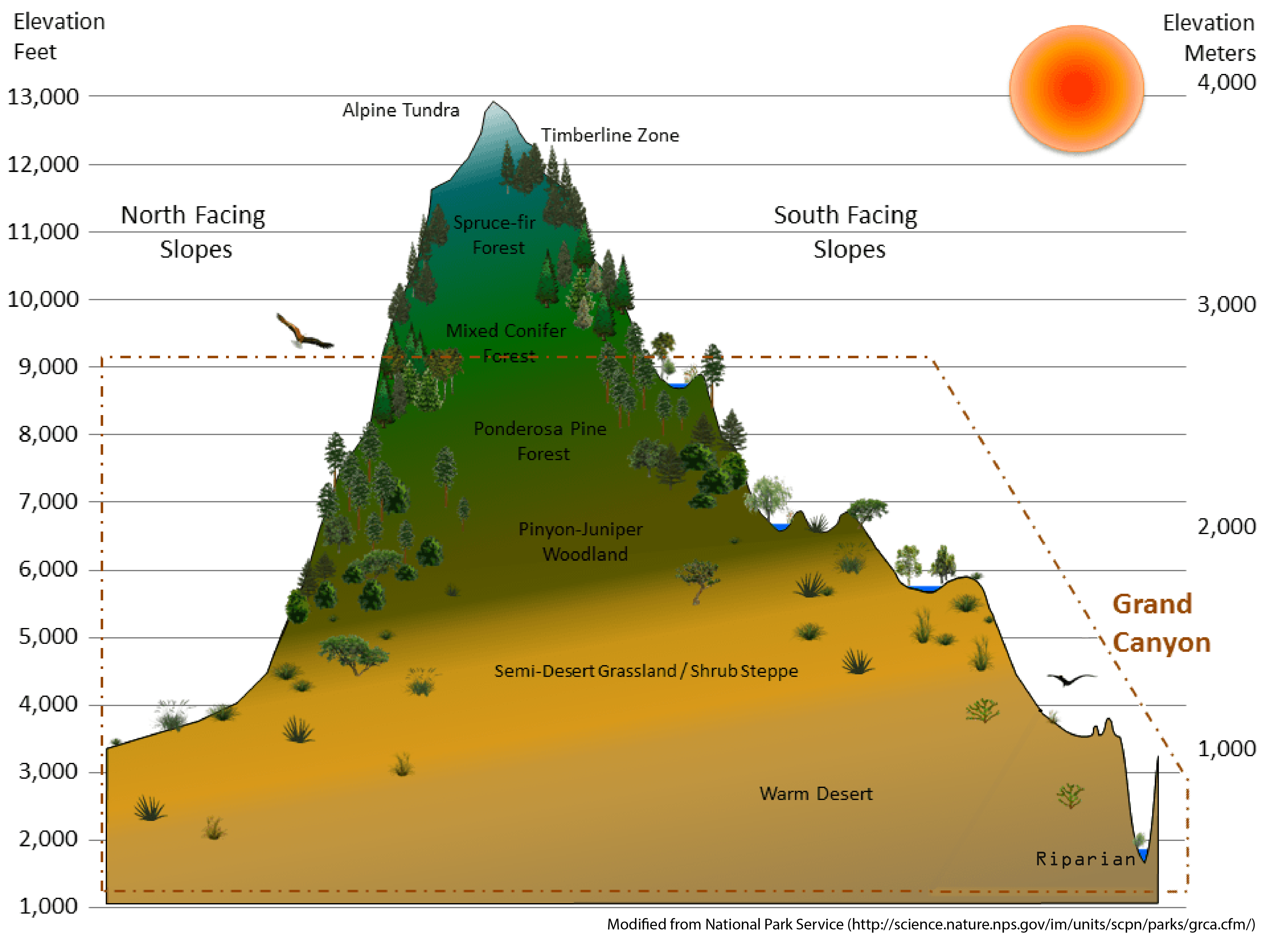The Grand Canyon National Park, one of the most iconic locations in the world, is most often renowned for the scale and spectacular geology of the Canyon itself. If you have ever been there personally you are probably nodding your head right now. However, many people do not realize that in addition to the impressive display of geologic history revealed by the canyon, there are several different ecosystems within and adjacent to the park boundaries as well. As a result of human activities there have been significant impacts to these sensitive ecosystems. In an effort to slow down or even reverse some of these adverse effects, different restoration strategies have been implemented that vary depending on the ecosystem in question. This article discusses some of the issues and restoration strategies for ponderosa pine forests, arid grasslands, and riparian corridors within and nearby the Grand Canyon National Park.
Ponderosa pine is one of the three forest communities in the park, typically found at elevations between 6,500 and 8,200 ft. The tree is easily identified by its tall, straight trunk with rusty-orange bark that smells like vanilla or butterscotch. It was named after its heavy (ponderous) wood, making it the major lumber tree in the southwest. Ponderosa pine forests are believed to have evolved with fire, making it an important part of the ecosystem functioning. More-frequent, low intensity fires would move through the forests burning materials closest to the ground, but sparing the larger trees while providing nutrients for them. Policy put in place by the US Forest Service to prevent and combat all forest fires, known as fire-exclusion, has resulted in much greater tree density throughout the forest and higher fuel loads than would normally be present in the system. This has essentially traded multiple small fires that the larger trees can survive (and even depend on) for one big fire that kills everything. Fortunately, a collaborative effort known as the Four Forest Restoration Initiative (4FRI) has been working to restore ponderosa pine forests to the point where they can support natural fire regimes one again. Primarily using thinning and prescribed fire methods, the group engages multiple stakeholders, including industry, so that the cost of the restoration can be covered by the value of the products removes. The goal of 4FRI is to treat one million acres of ponderosa pine forest over a 20-year period using science-based and socially acceptable agreements.
Another major ecosystem within the Grand Canyon National Park that has been disrupted is arid grassland. An invasive species known as cheatgrass, so-called because farmers were “cheated” out of a full harvest when it spread onto their wheat fields, is able to out-compete native species by forming a low, dense, relatively continuous carpet. This results in increased fire frequency and intensity, increased erosion, and decreased species diversity. To make matters worse, cheatgrass is the first species to rebound following wildfire, further exacerbating the problem. A new restoration technique to combat cheatgrass is called “greenstripping,” which involves grazing cows at the right time to eat the cheat grass, followed by artificial planting of native grasses with specially coated seeds that improve water uptake. The native seeds are planted in wide strips, hence the term “greenstripping.” While still in the experimental phase, it is hoped that the strips will act as both fire breaks and sources of seed for re-establishment of native grasses after the cheatgrass has burned out.
The most obvious and arguably most complicated ecosystem within the park is the riparian corridor along the Colorado River at the bottom of the Grand Canyon. One of the more invasive species to this ecosystem is tamarisk, also known as salt cedar. Introduced into the U.S. in the 1800s to help prevent erosion, it rapidly spread throughout the west and made its way into the Grand Canyon around the late 1920s. It is a prolific and competitive species, well adapted for a wide range of environmental conditions. Tamarisk grow in dense stands along the riverbanks, displacing native vegetation. Effective removal of tamarisk used to consist of a combination of mechanical and chemical (herbicide) controls, but the recent introduction (after extensive testing) of the tamarisk leaf beetle may also help combat its spread in the southwest. This all sounds well and good except for one simple problem: the southwestern willow flycatcher. Listed as a federally endangered subspecies in 1995, the southwestern willow flycatcher use tamarisk habitat as breeding territory. Because of this, and general economic reasons, it is unlikely that tamarisk will ever be completely eradicated from the Grand Canyon. This is a great example of the complexity inherent in restoring ecosystems back to how they were before being altered by humans. While it is likely impossible to revert these systems completely to their unaltered state, we can restore them to a closer version of how they used to function.

